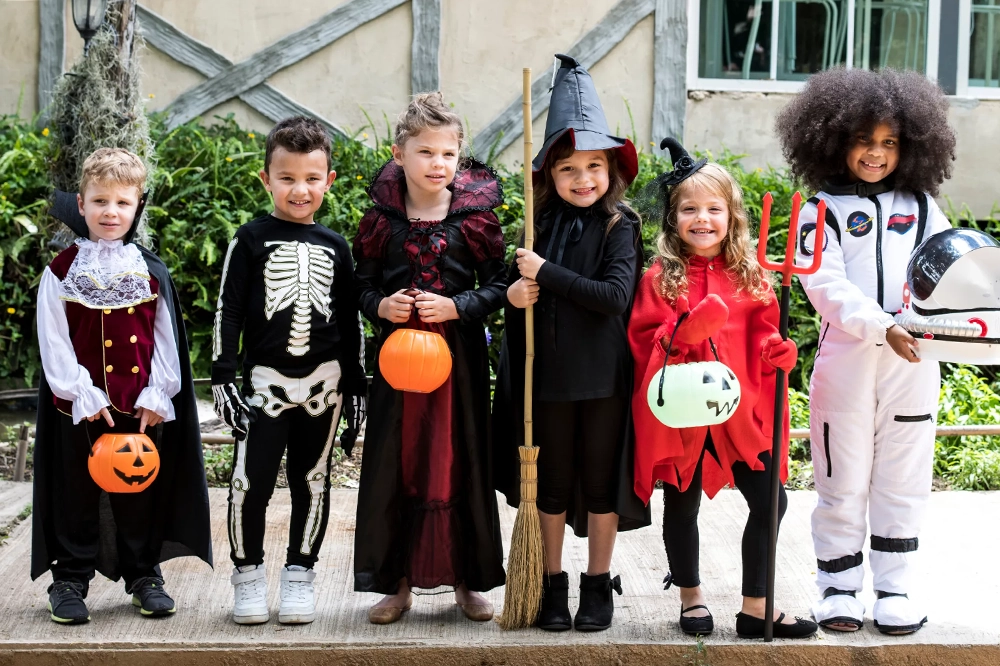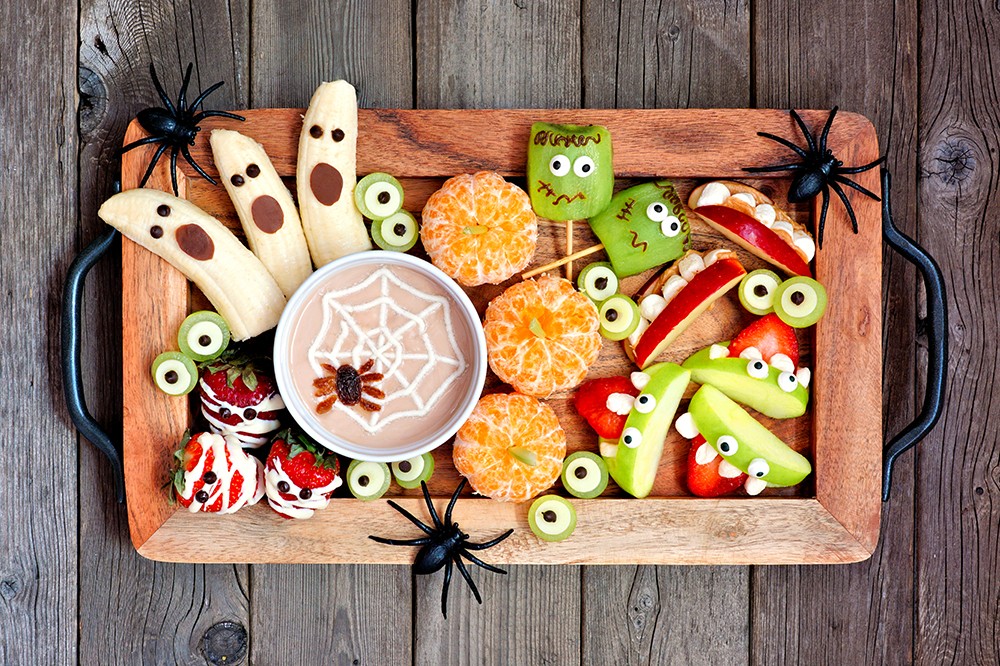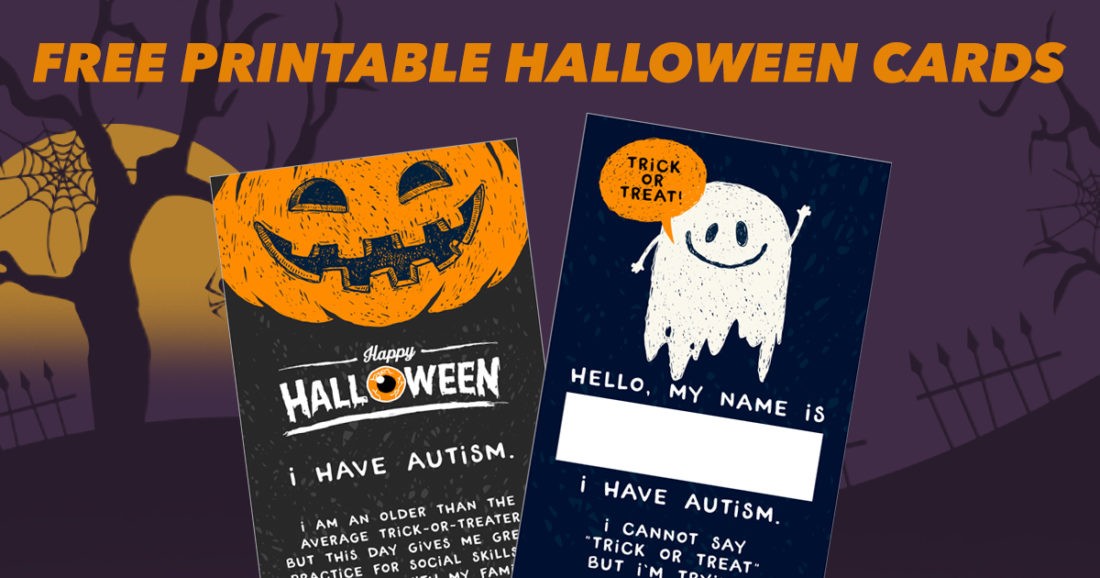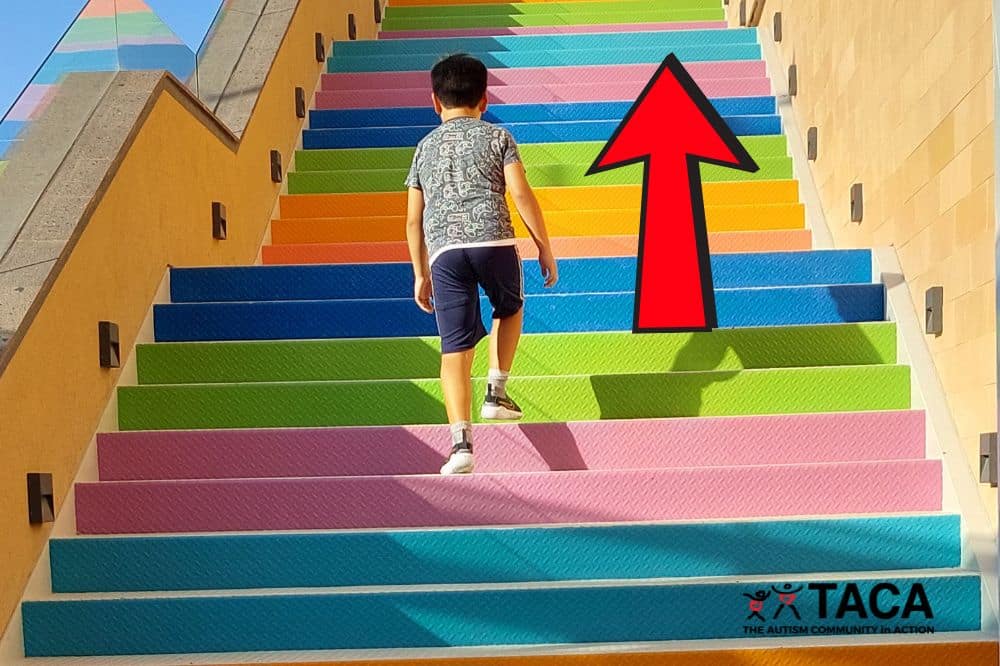Halloween Tips and Treats for Autism Families

All contents of this resource were created for informational purposes only and are not intended to be a substitute for professional advice, diagnosis, or treatment. Always seek the advice of your physician, therapist, or other qualified health providers with any questions or concerns you may have.
Costumes, loud noises, sugar, sugar, and more sugar… For families with autism, Halloween can be a nightmare. The good news is that TACA is here to help! Below are resources for a spook-tacular Halloween, including:
- Tips and ideas for trick-or-treating, parties, costumes, decorations, safety, sensory needs, and dietary considerations.
- A FREE download, featuring TACA’s Halloween Cards, to help spread awareness and promote inclusion for everyone.

Prepare for a Fa-Boo-Lous Halloween
The unpredictability of Halloween along with its sights, sounds, and smells can be 100 times scarier for a child with autism. However, when we let our children know what to expect ahead of time, we pave the way to a fa-boo-lous holiday.
- Use social stories to help your child understand and prepare for Halloween and any activities you plan on participating in.
- Watch family-friendly cartoons and movies with positive scenes of children trick-or-treating and attending Halloween activities.
- Reduce anxiety by maintaining your child’s regular routine as much as possible.
- Mark the dates of important events on a calendar.
- If your child has a tendency to become anxious when anticipating an event, you may want to adjust the number of days in advance you prepare him or her.
- When planning and scheduling activities, be sure to keep realistic expectations.
- Knowing and respecting your child’s limits will ensure that everyone has an enjoyable time.
- This also provides an opportunity for your child to succeed, which builds their confidence and self-esteem.
- If you’re going to a party, ask the host to let you know, in advance, as much about the plans as possible:
- See if you can help plan the party and include activities that your child enjoys.
- Prepare your child for how long the event/gathering will last, how many people will be there, and what activities are planned.
- Develop a portable picture schedule to help your child know what to expect.
- If your child has trouble adjusting to change, be flexible.
- Teach your child how to safely leave a situation or get support when an event becomes overwhelming.
Safety

Even in familiar environments, unfamiliar sights and sounds can increase the risk of wandering. Hence, constant vigilance is a must! Especially since communication issues can make it difficult (or impossible) for your child to tell someone that they are lost and how to find you.
- Before you leave to go trick-or-treating or to a party, take a picture of your child in their costume.
- This will ensure you have a recent photo of your child that captures what they are wearing in case they get lost.
- Designate one responsible adult to keep eyes on your child at all times. Give that adult a time frame. When their time frame is up, they can pass the responsibility to another responsible adult. Sharing this important responsibility assures your child always has eyes on them and gives everyone some time to relax.
- Ensure that your child is easily seen by you and others. This is especially important if your child has a tendency to wander.
- Add reflective tape to their costume and/or trick-or-treat bag.
- Use glow-in-the-dark bracelets or necklaces.
- Likewise, wear something that distinguishes you from the crowd so your child can easily find you.
- Make sure your child always has some form of identification on them and a way to communicate that they are lost:
- Order bracelets or necklace tags that have identifying information on them from places like Lauren’s Hope or Road ID.
- If needed, write your name(s) and cell phone number(s) on paper and put in the pockets of every piece of clothing your child is wearing – pants, shirt, jacket, shoes, socks, etc.
- Consider temporary tattoos or even writing your contact information somewhere on your child’s body with a pen.
- When in crowded areas, keep your hands on your child at all times or use the “bookend” approach where one adult is on each side of them.
- If your child can reliably carry a cell phone, a pre-programmed phone with only 911 and your cell number can be comforting and helpful.
- Learn more about Keeping Your Kids with ASD Safe here.
Halloween Costumes
When it comes to costumes, the most important thing to consider is how your child feels about them. Many costumes are uncomfortable: they itch, smell weird, restrict movement, and tend to overwhelm those with sensory issues. Because of this, we suggest following your child’s lead regarding costumes.
If your child is open to dressing up for Halloween, we offer the following tips:
- Avoid accessories and props that may cause sensory overload. Simplicity is key.
- Allow your child to dress up as their favorite cartoon or game character no matter their age. After all, there’s no law which mandates that people have to stop liking Elmo or Thomas the Train after a certain age.
- Have your child practice wearing their costume before Halloween. Doing so will help determine if it’s comfortable and fits properly.
- When shopping for costumes, check out the pajama section of the store. There are lots of comfortable pajamas that look like costumes.
Sensory Needs
Whether you’re going to a party or out trick-or-treating, your child may have sensory needs that will need accommodating.
- Bring along items tailored to your child’s sensory diet: noise blocking headphones, ear plugs, weighted vests, comfort items, etc.
- At parties, set aside a private room for your child to safely relax when the crowd and noise become overwhelming.
- Make sure there are familiar books or other belongings in this area.
- As mentioned above, have your child practice wearing their costume before Halloween to find out if it’s uncomfortable and make adjustments accordingly.
Dietary Considerations

The following precautions can help prevent your child from goblin up foods they are sensitive and/or allergic to.
Candy
- Teach your child not to eat anything they get from trick-or-treating without your permission.
- Be on the look-out for homes that are participating in the Teal Pumpkin Project. A house with a teal pumpkin on the doorstep will have non-food treats available for trick-or-treaters.
- Before Halloween, deliver allergy-friendly treats to neighbors to give to your child on Halloween.
- Be sure to explain to them about your child, what they will be dressed as, and how much your whole family will appreciate their support.
- Exchange the candy your child can’t eat for something extra special they’ll enjoy, such as:
- Toys; candy/treats that are safe for them to eat; money; extra time on electronics; a trip to the zoo, movies, or local theme park; etc.
Party Food
- Find out what’s on the menu so you can bring along similar items that are safe for your child to eat.
- Consider bringing enough for your child to share with everyone so they don’t feel singled out eating something that’s different from everyone else.
- Our online support group for parents has a number of threads with ideas for allergy-friendly ghoulish grub and treats.
- Don’t let your child eat food or candy of which you are unfamiliar.
- Be prepared for possible food infractions. See TACA’s webpage for more information on this topic.
Halloween Decorations
With their flashing lights, loud sounds, and sudden, unexpected movements, Halloween decorations can be frightening or overwhelming to those with sensory issues.
Below are some tried-and-true tips to help your child keep calm and pumpkin on:
- Avoid houses with scary decorations when trick-or-treating. Especially if your child bolts when frightened.
- To help your child become accustomed to scary decorations, remind them that the sounds and the decorations themselves aren’t real.
- In your own home, keep decorations packed away until a future year when your child is no longer frightened by them.
- If the change in scenery brought on by decorations is difficult for your child:
- Prepare them by showing pictures of your house all decked out from previous years.
- Gradually decorate. Make a visual schedule or calendar that shows what will be done on each day.
- If you have fragile Halloween decorations that you do not want your child to touch, be sure to set up unbreakable decorations they can touch:
- Include Halloween-themed sensory toys, such as slime, squishy brains, stretchy skeletons or spiders, water wigglers with eyeballs, etc.
Trick-Or-Treating
Before Halloween:
- Practice all of the steps involved with trick-or-treating, such as:
- Ringing the doorbell or knocking at the door, waiting outside the door, receiving candy, expressing appreciation, etc.
- Have friends come over to role play trick-or-treating with your child.
- Walk through your neighborhood and explain where you’ll be going.
- Reinforce each victory by celebrating with a special treat, small toy, or high-five.
On Halloween:
- Try to keep the rest of your routine the same as every day/night.
- Start soon after dinner for early trick-or-treat festivities.
- Go with friends that your child loves.
- If your child becomes upset, be prepared to help others remain calm and neutral in an effort to minimize behavioral outbursts.
- TACA has My Child Has Autism Cards which are helpful to hand out in these types of situations.
- Let your child pass out candy to trick-or-treaters that come to your door.
Non-Speaking Individuals and Adults Can Trick-or-Treat Too!
At TACA, we feel that all celebrations should be inclusive. However, we know that many non-speaking individuals and adults with autism are often left out of Halloween festivities. Because of this, we created these Halloween Cards.

Download, print, and use these cards as a tool to help ensure that your child, no matter their age, has a way to communicate that they want to be part of the fun. And, don’t forget to practice handing them out before Halloween.
Note: For best printing results, please use Avery Clean Edge Business Cards (8871) or similar.
Conclusion
In summary, a little planning and preparation can go a long way when it comes to enjoying any holiday, especially Halloween. Above all, consider your child’s individual needs, keep expectations realistic, and follow your child’s lead. If it’s easier to skip out on the festivities, then skip out. After all, there’s always next year.
Witching you and your family a safe and fang-tastic Halloween!




